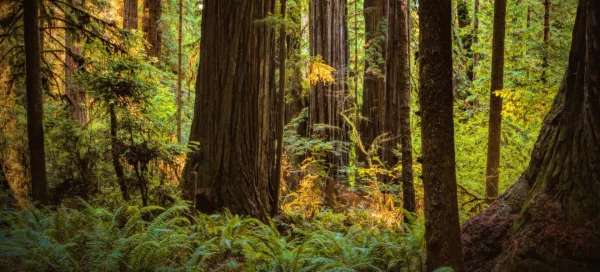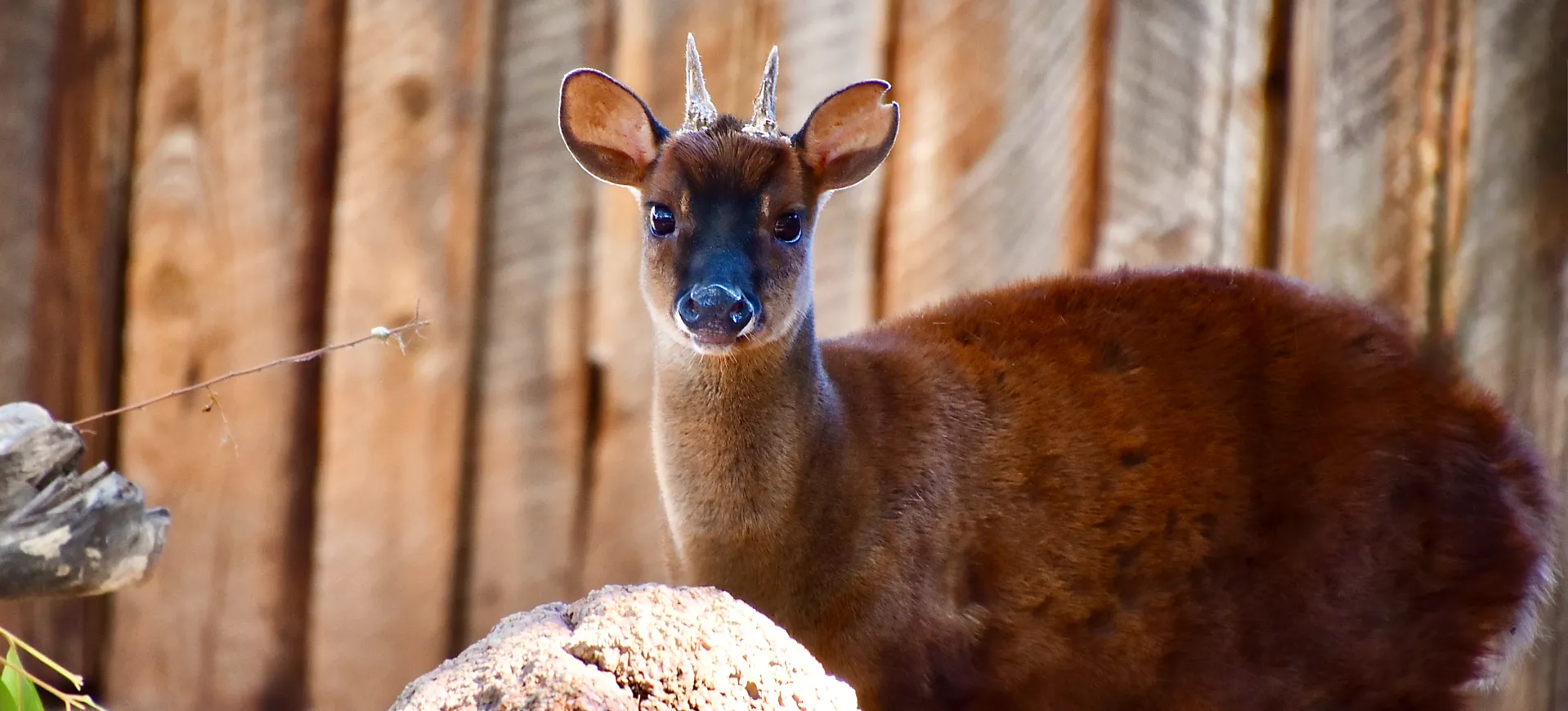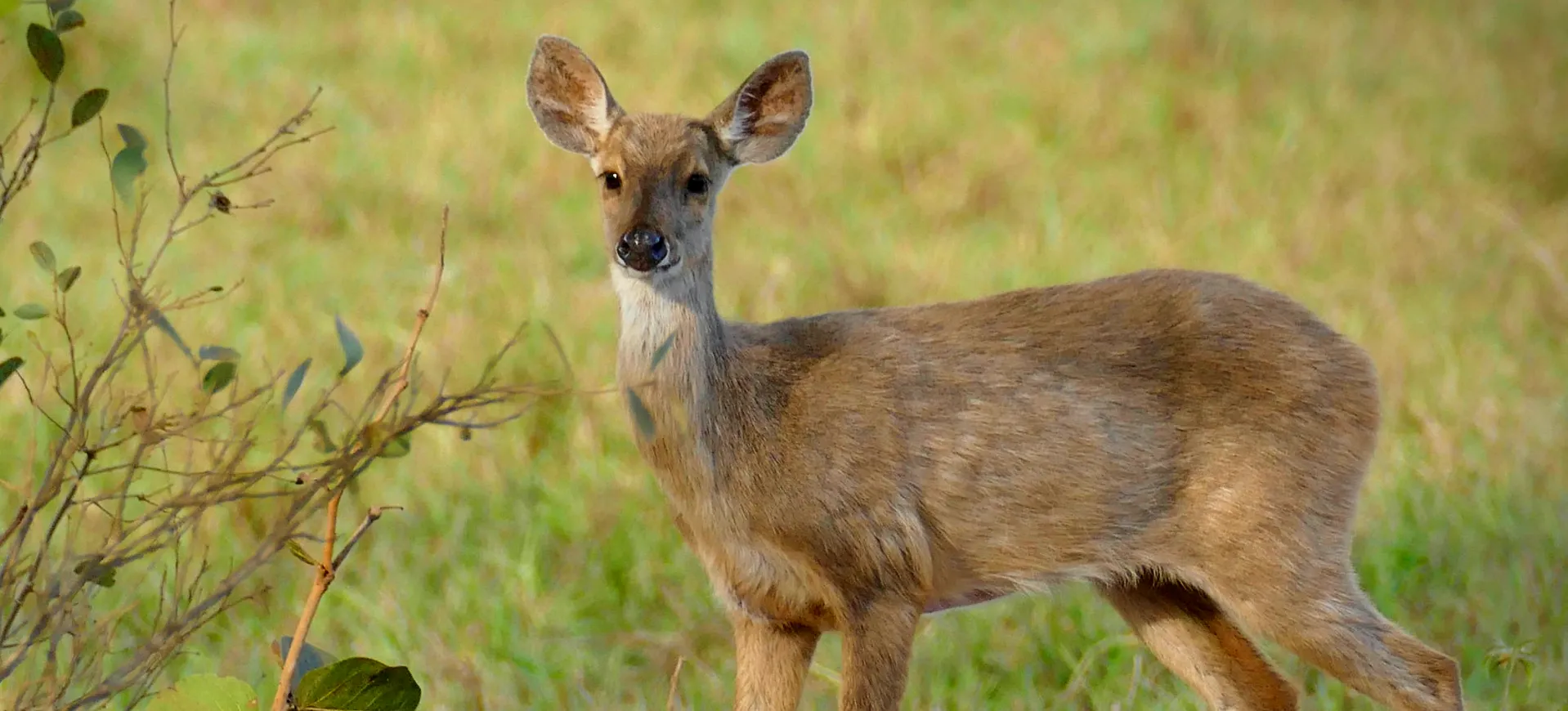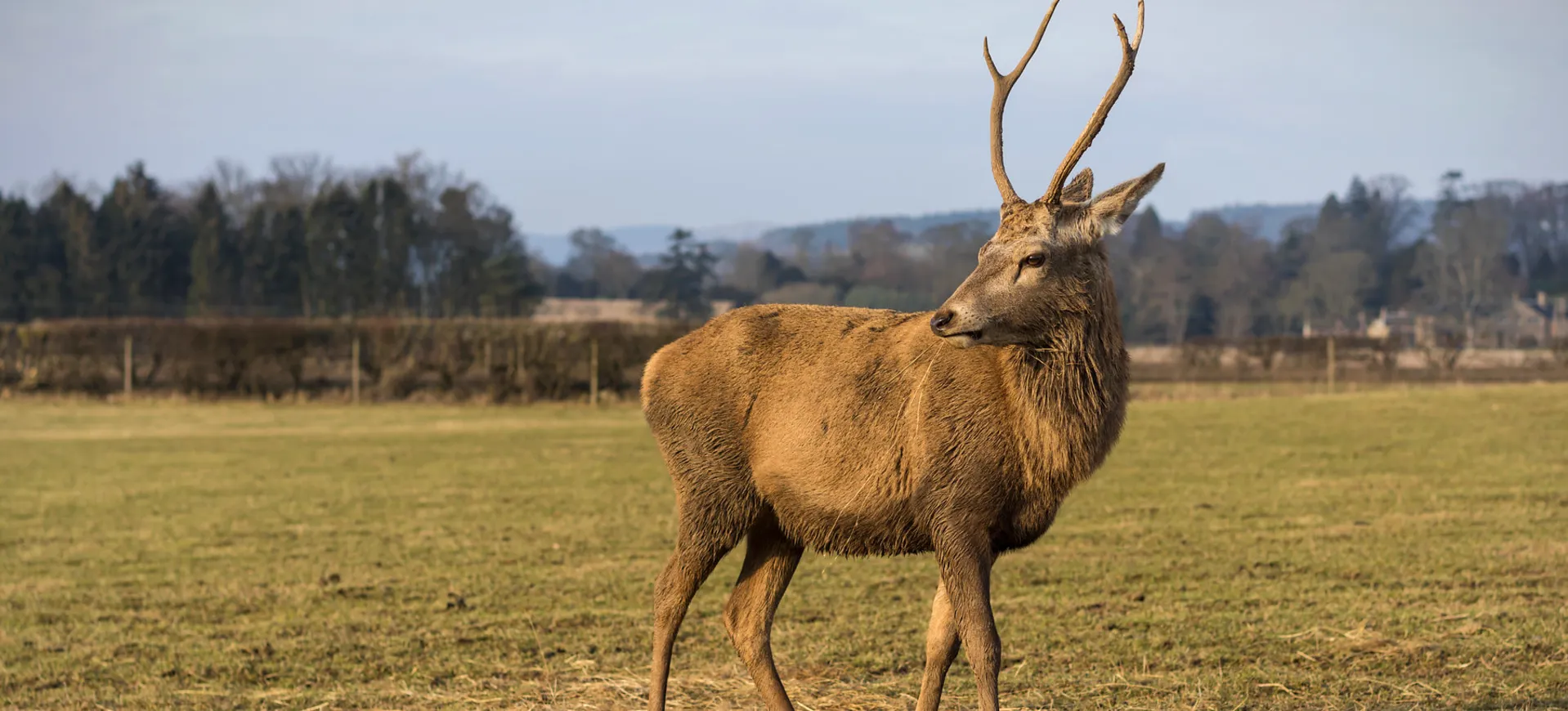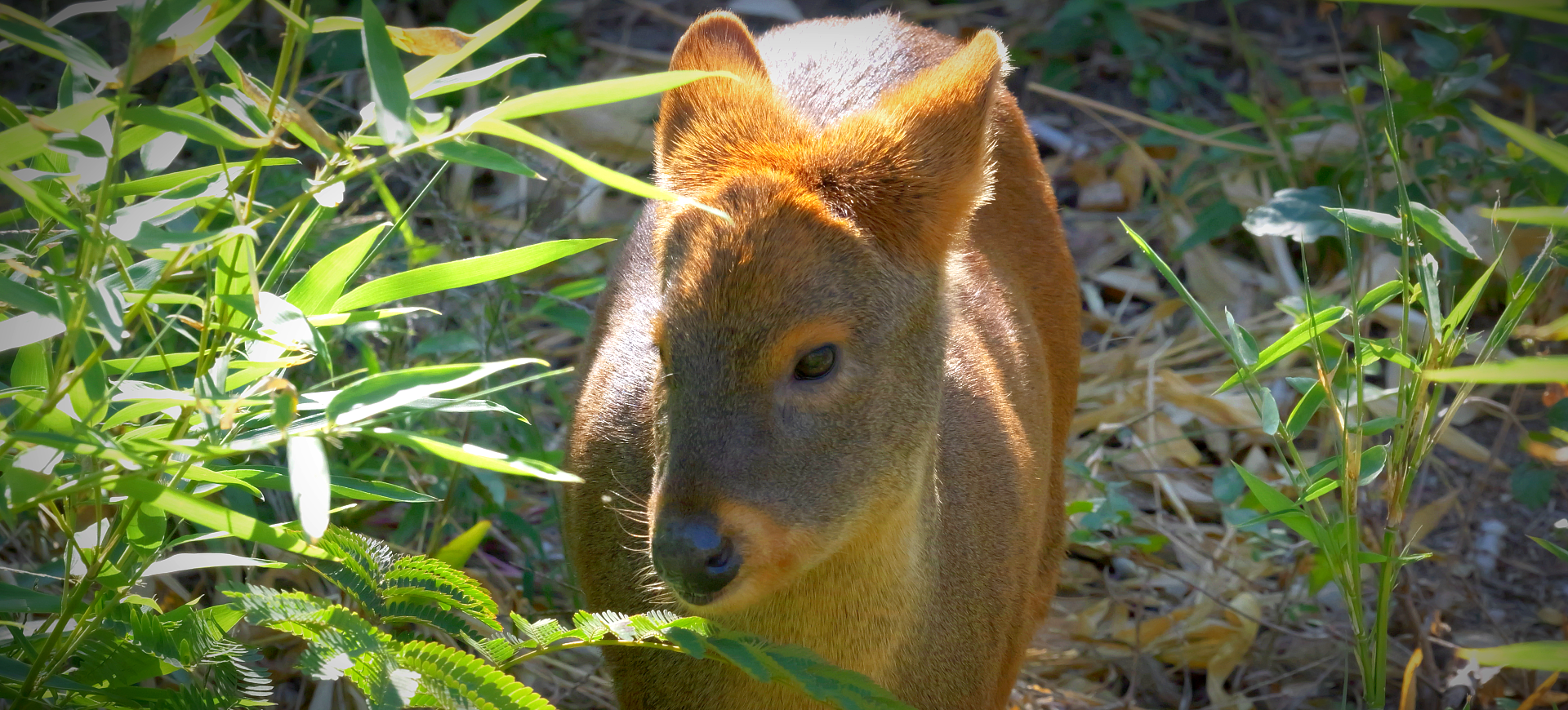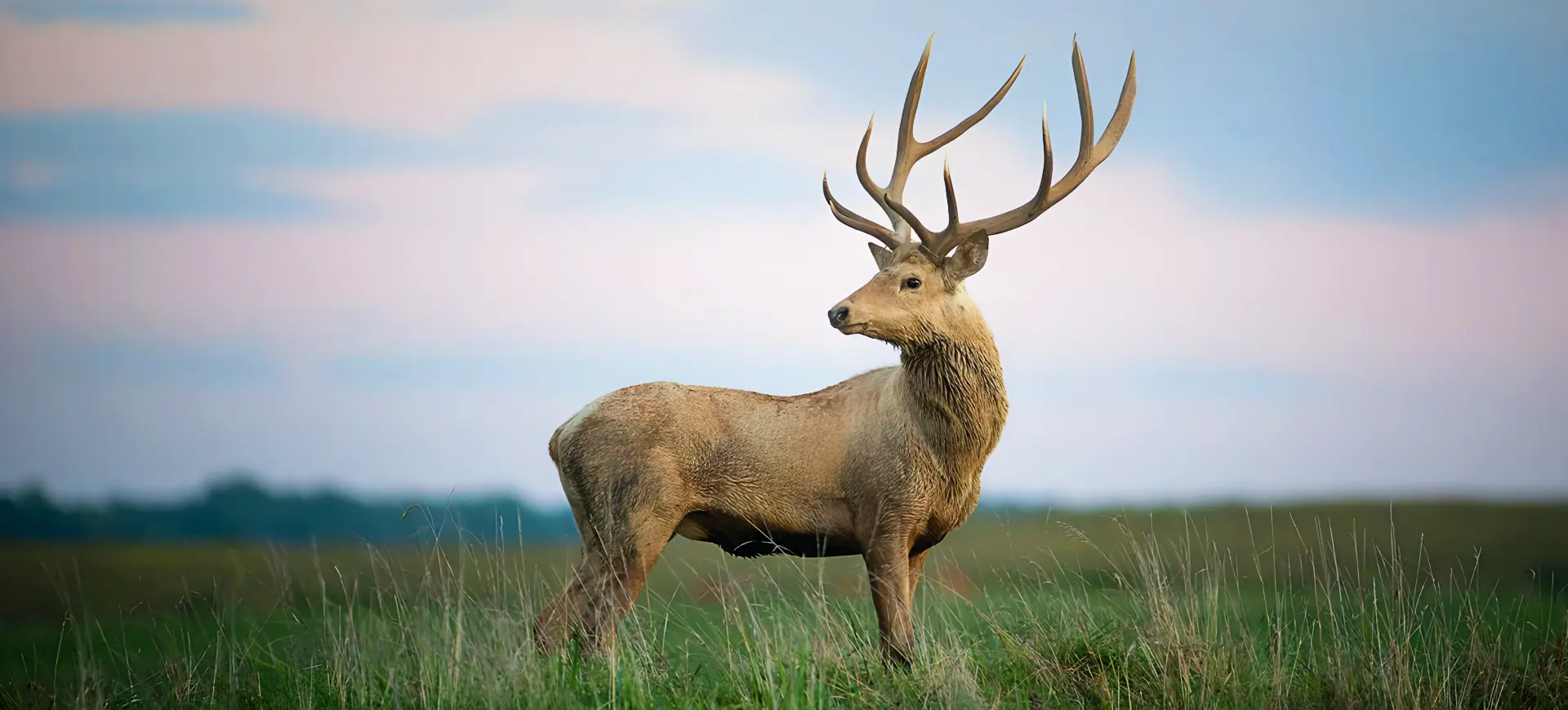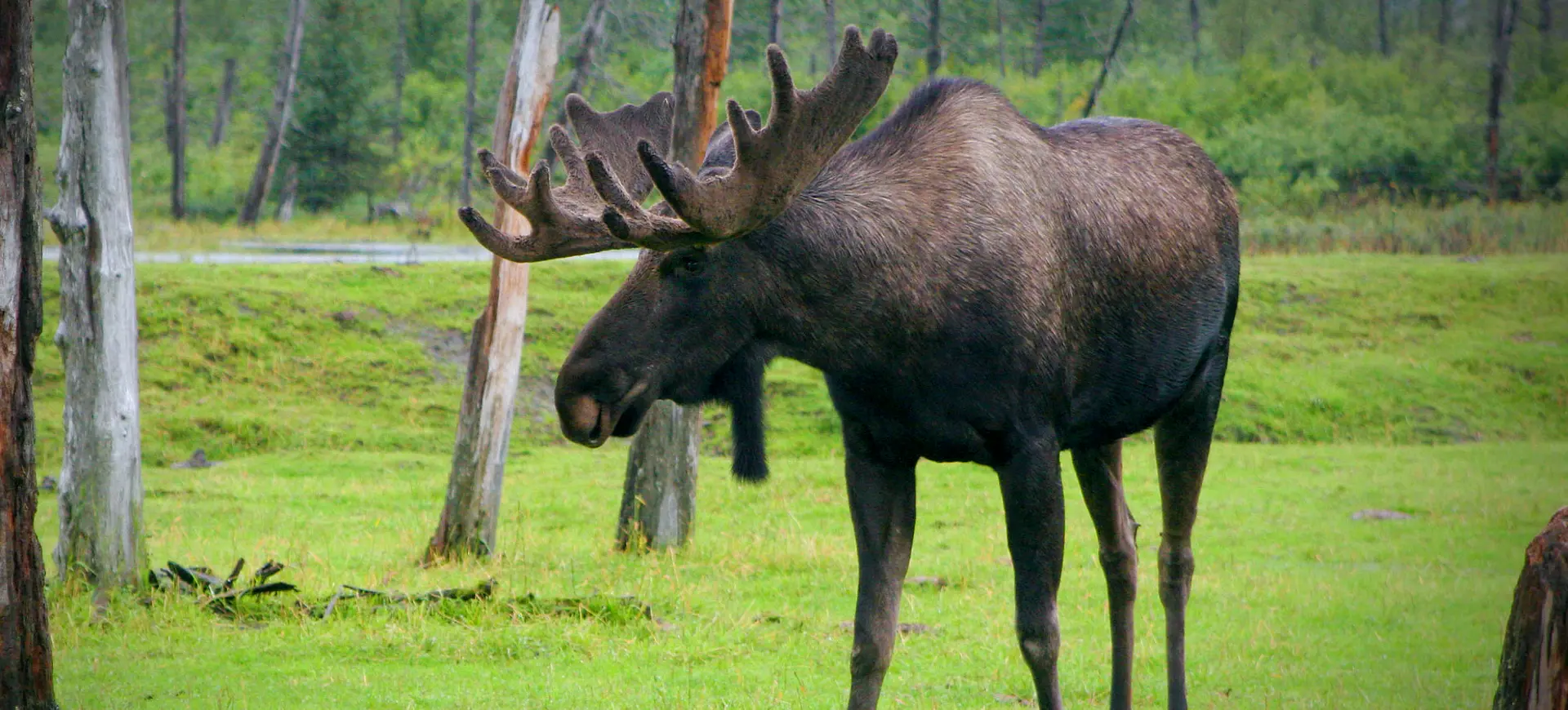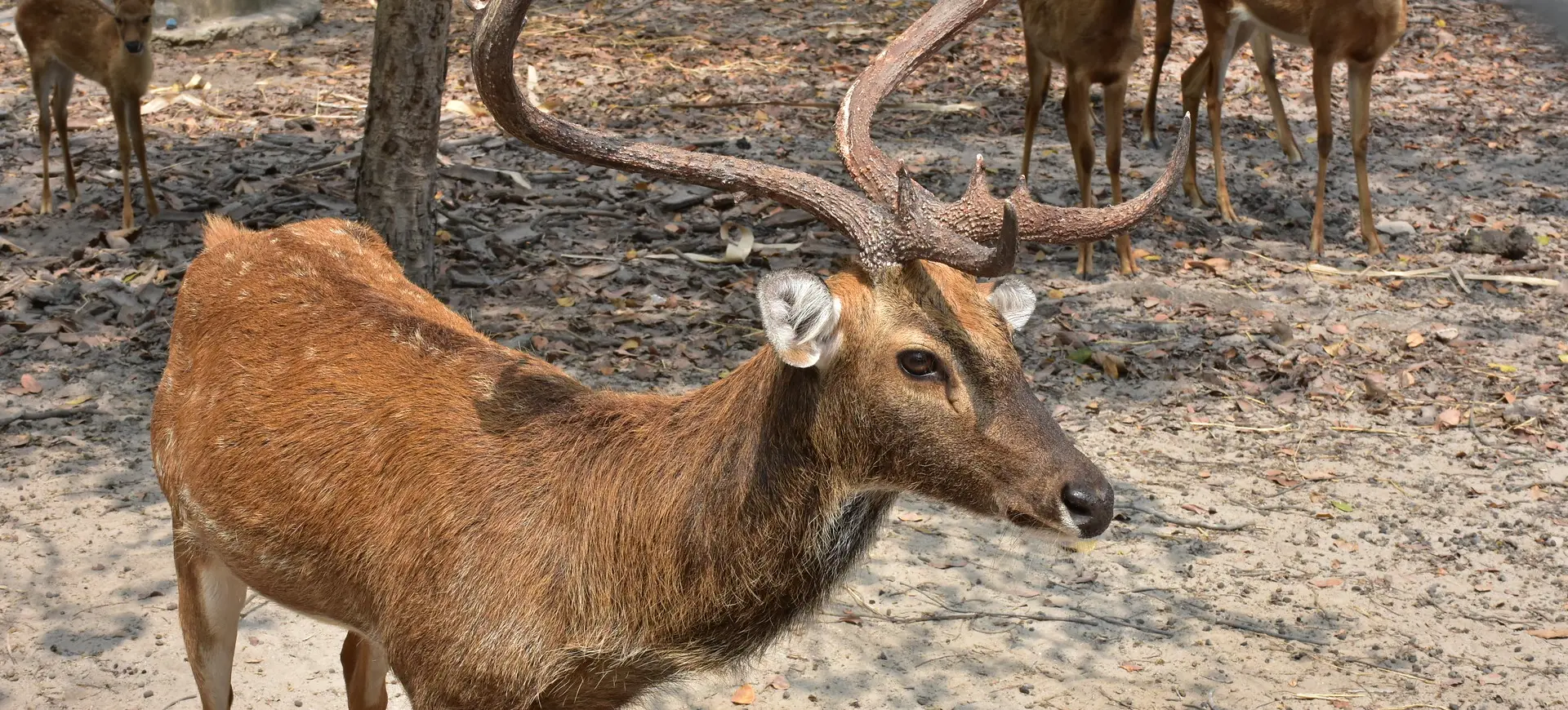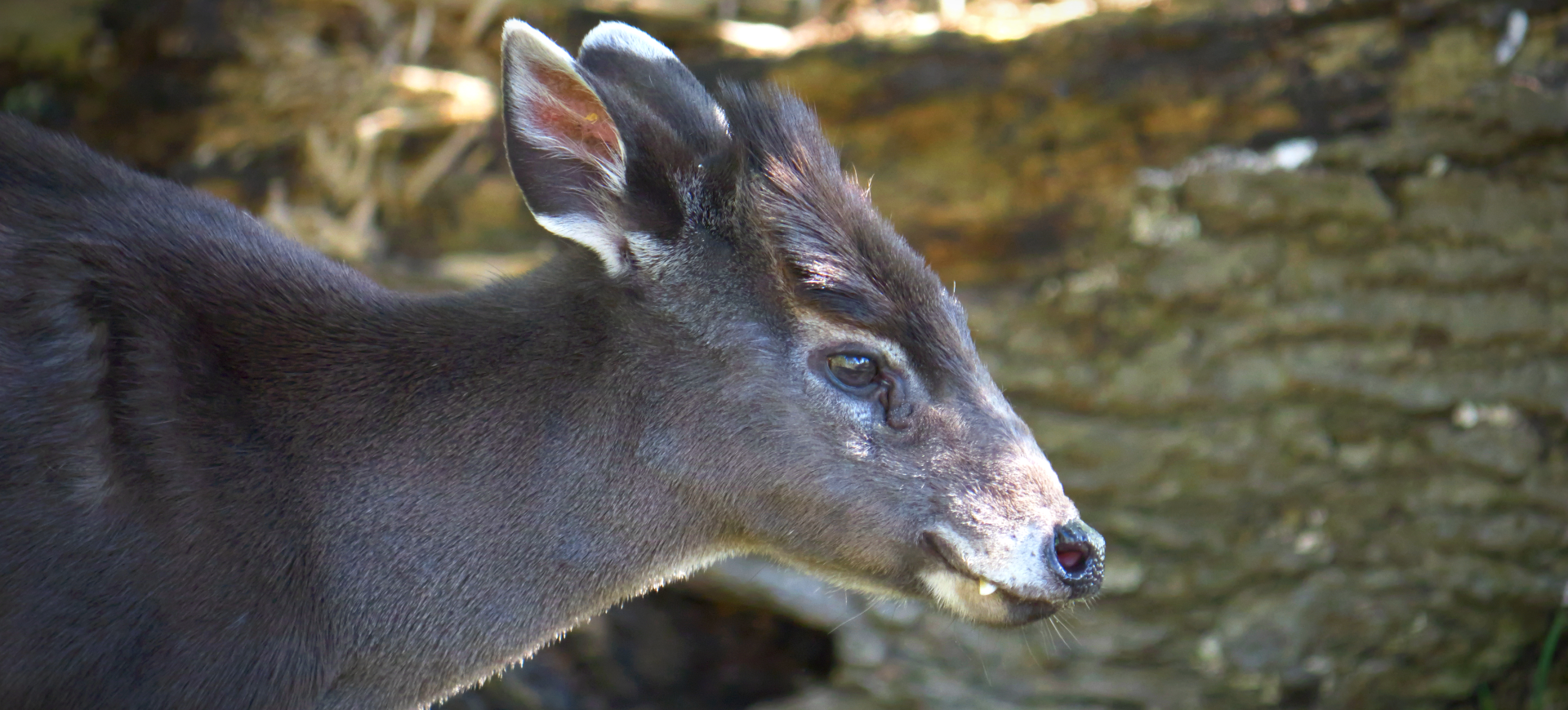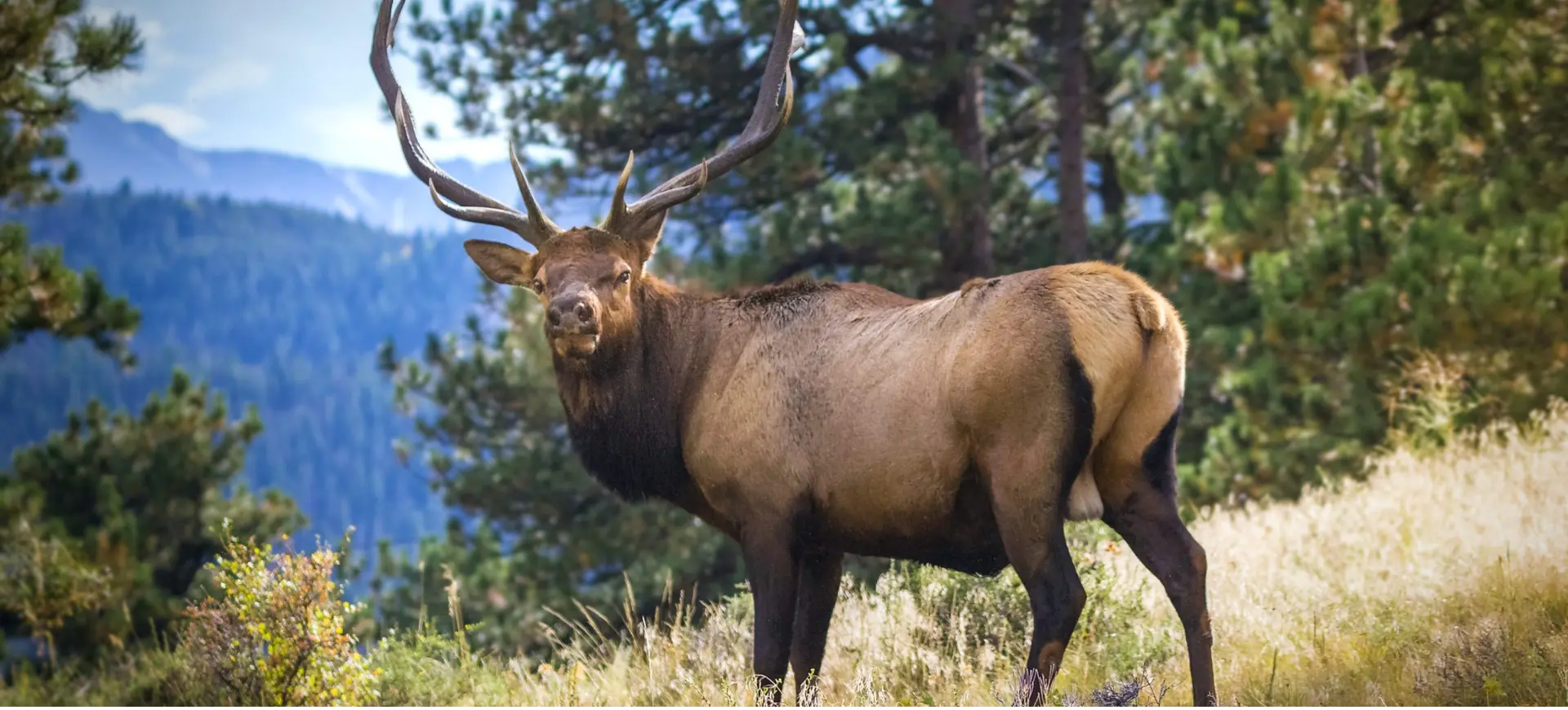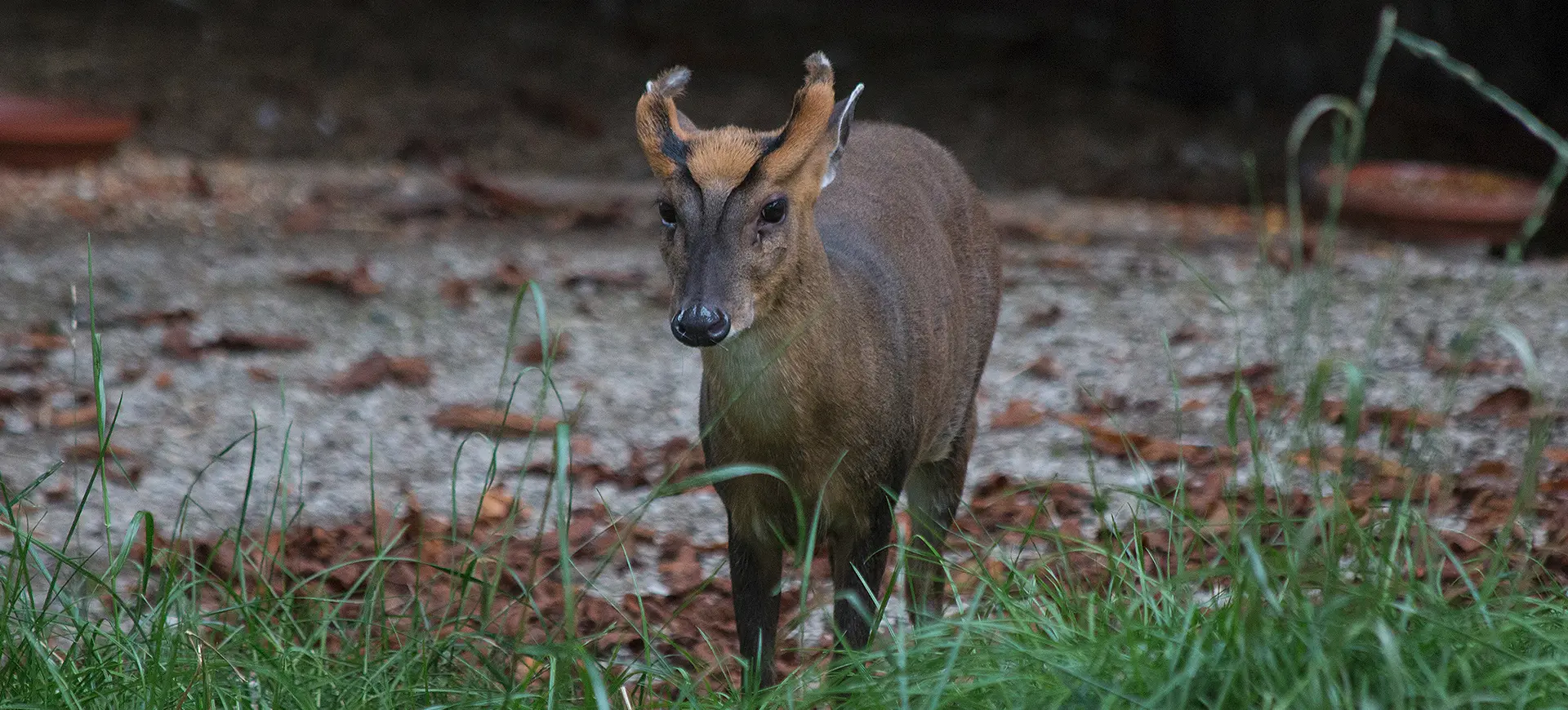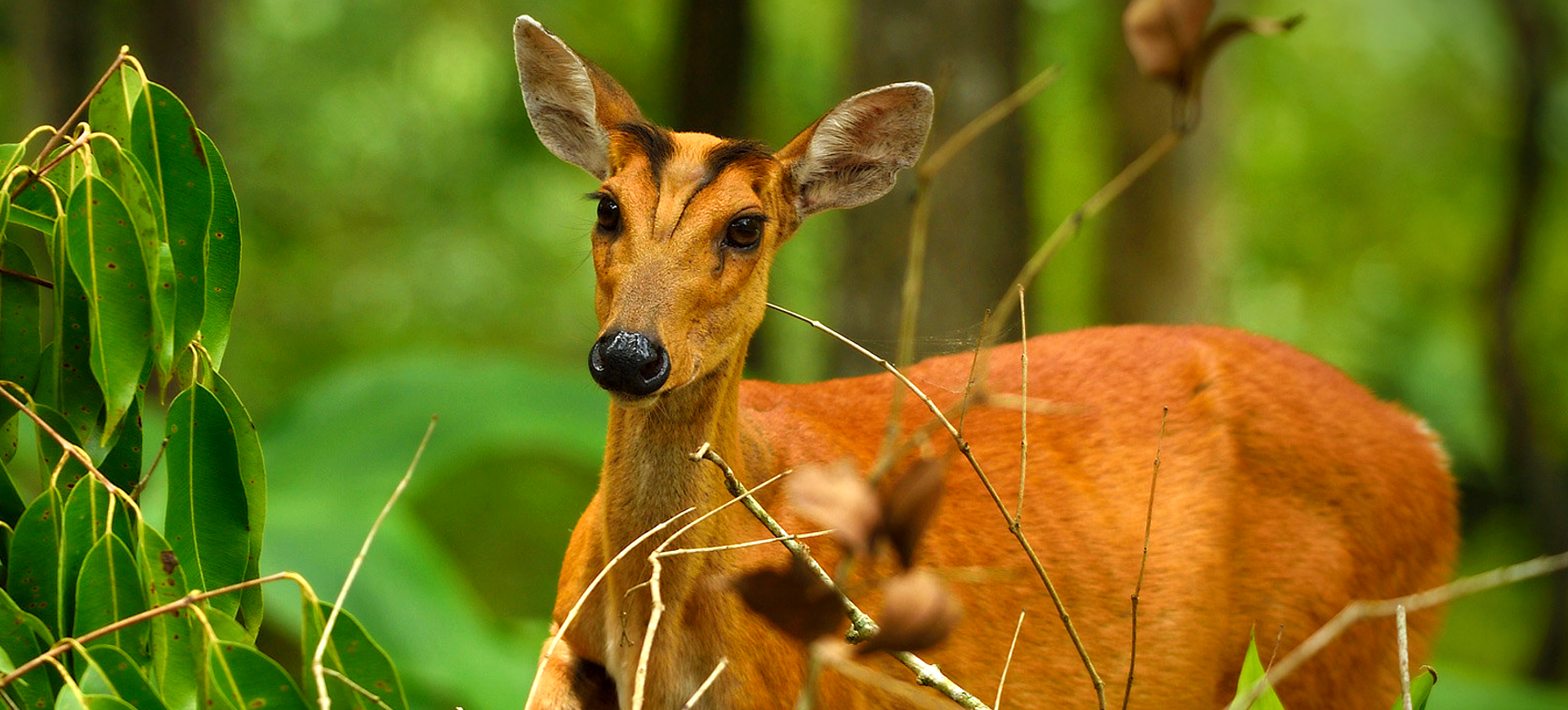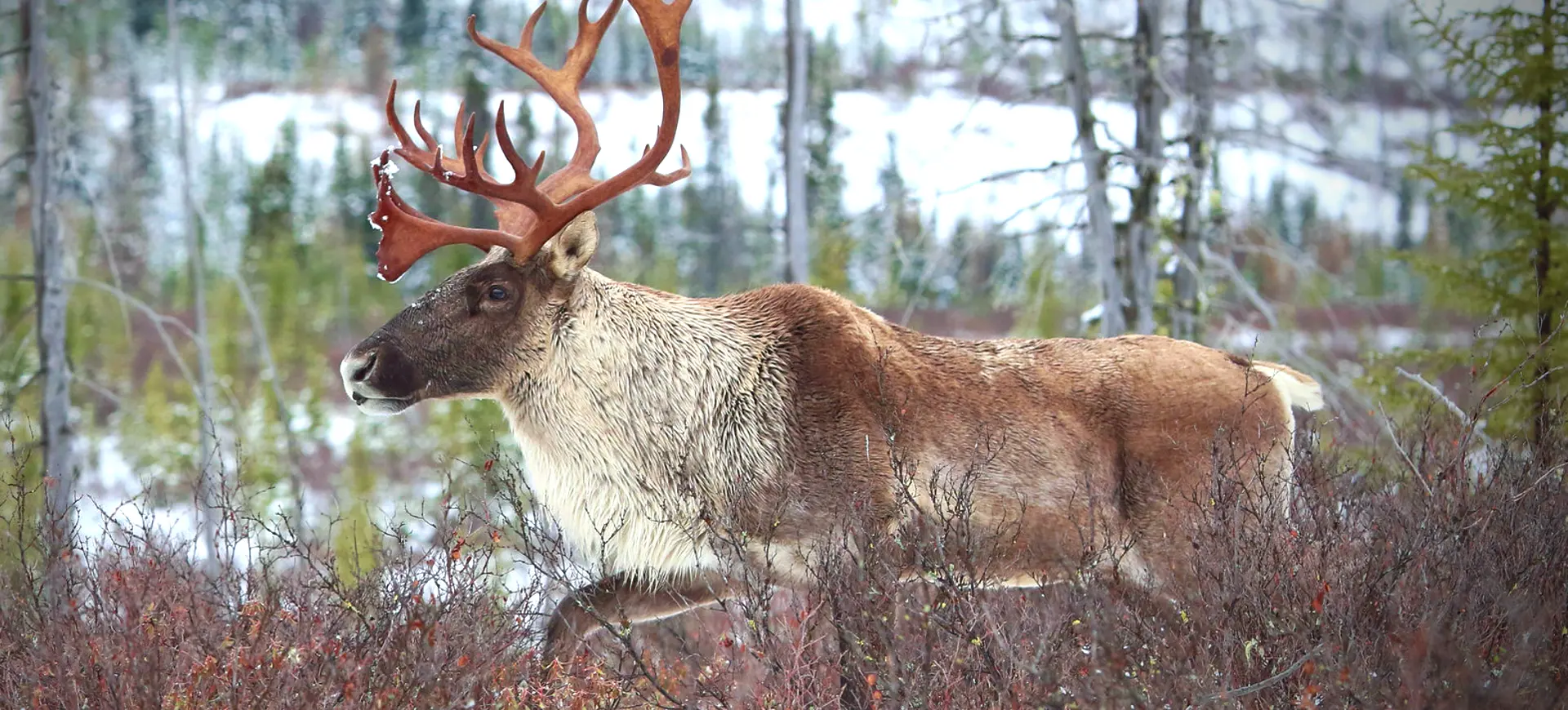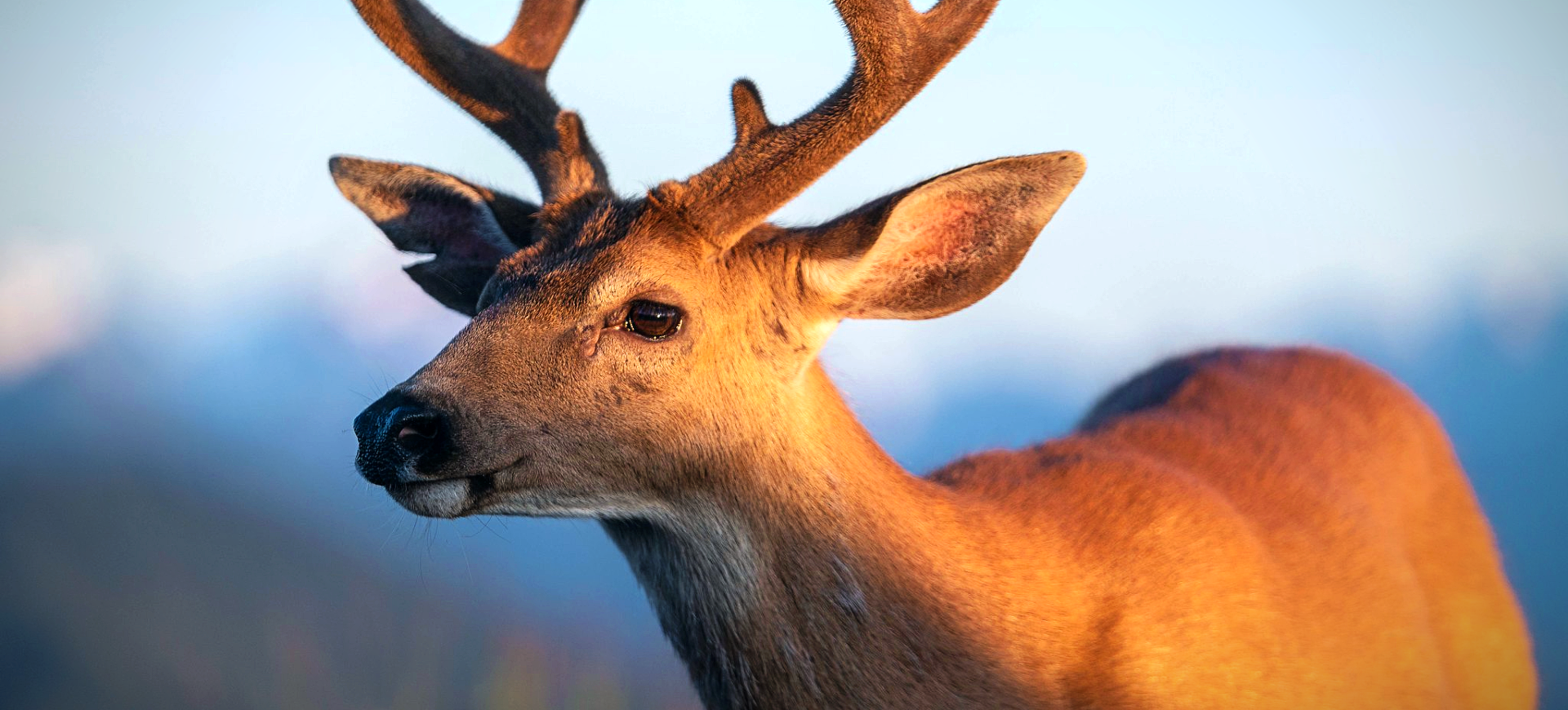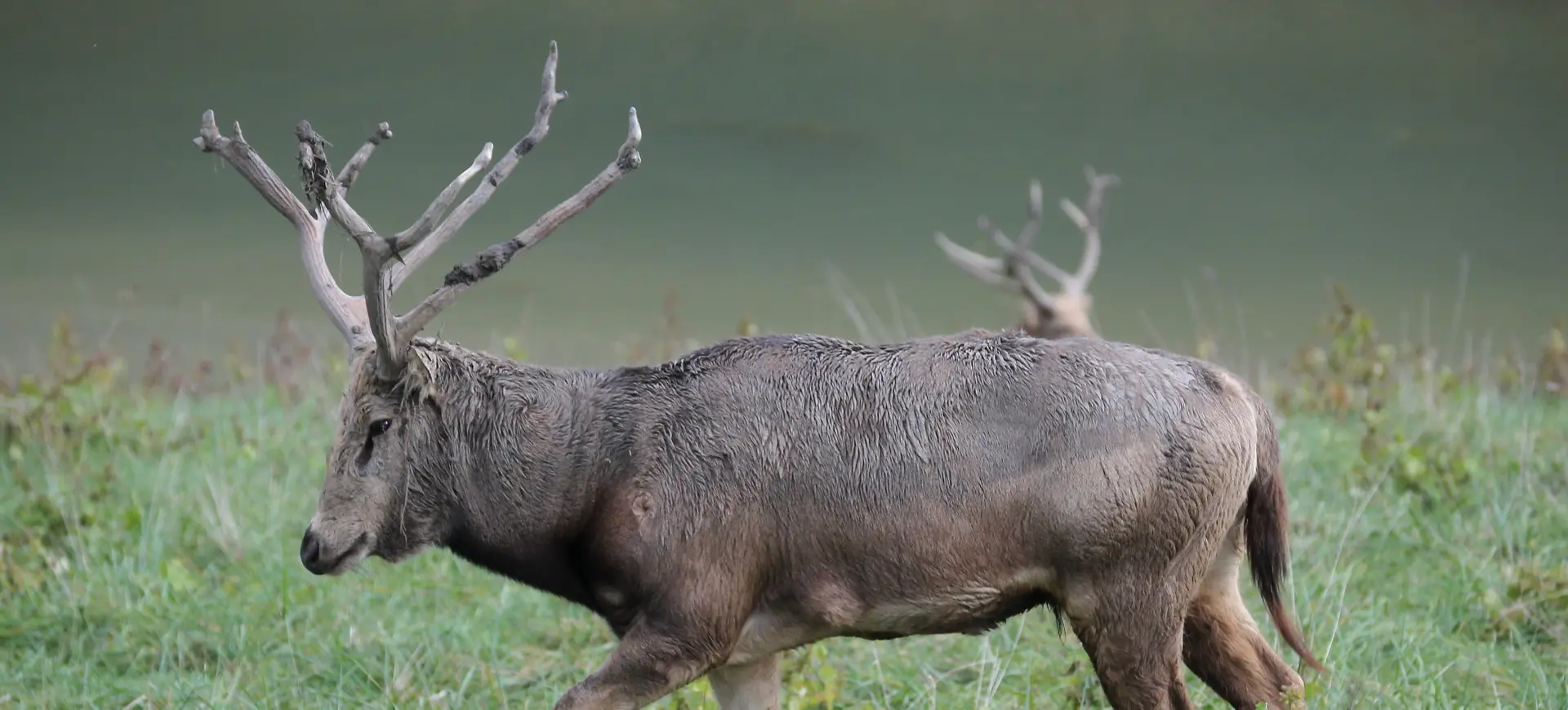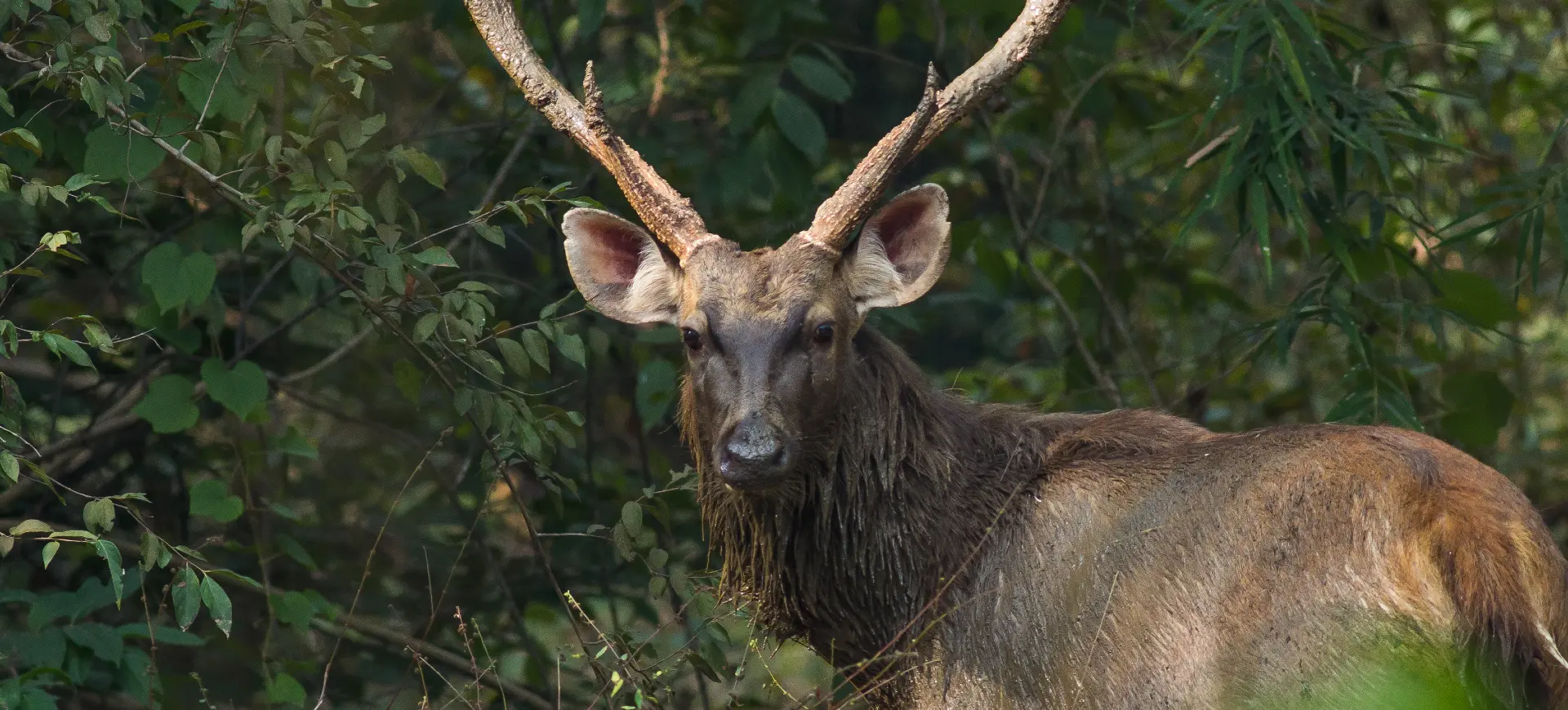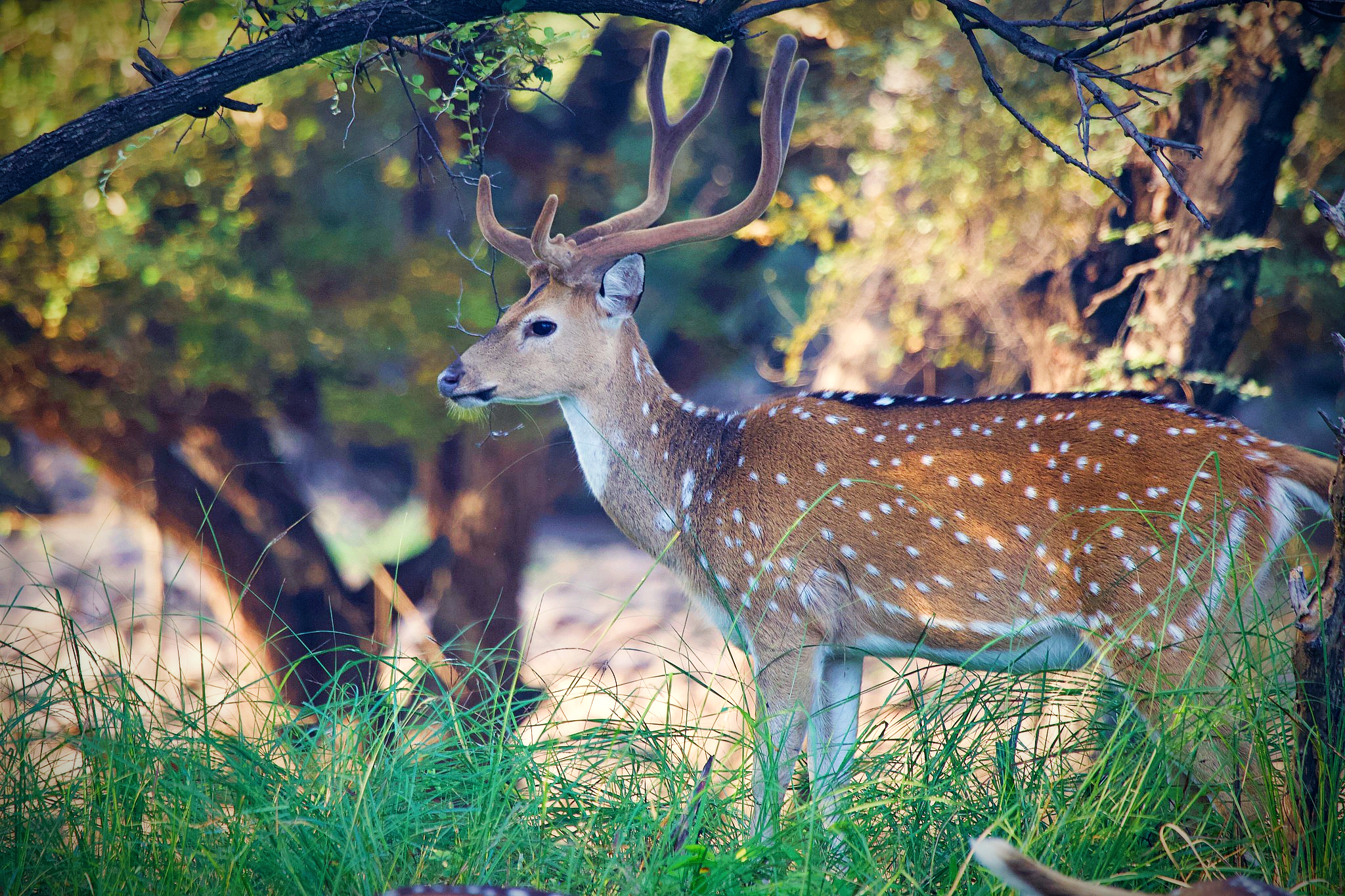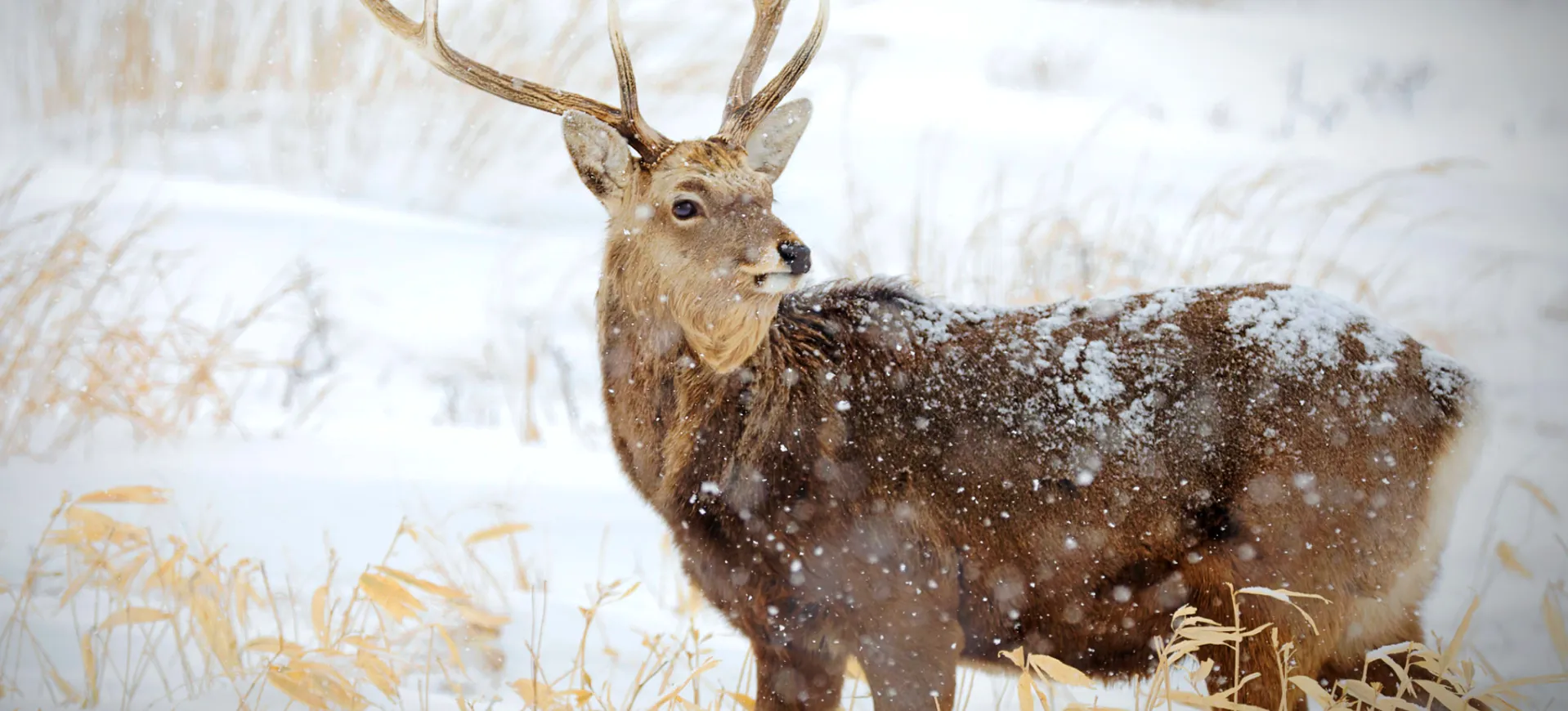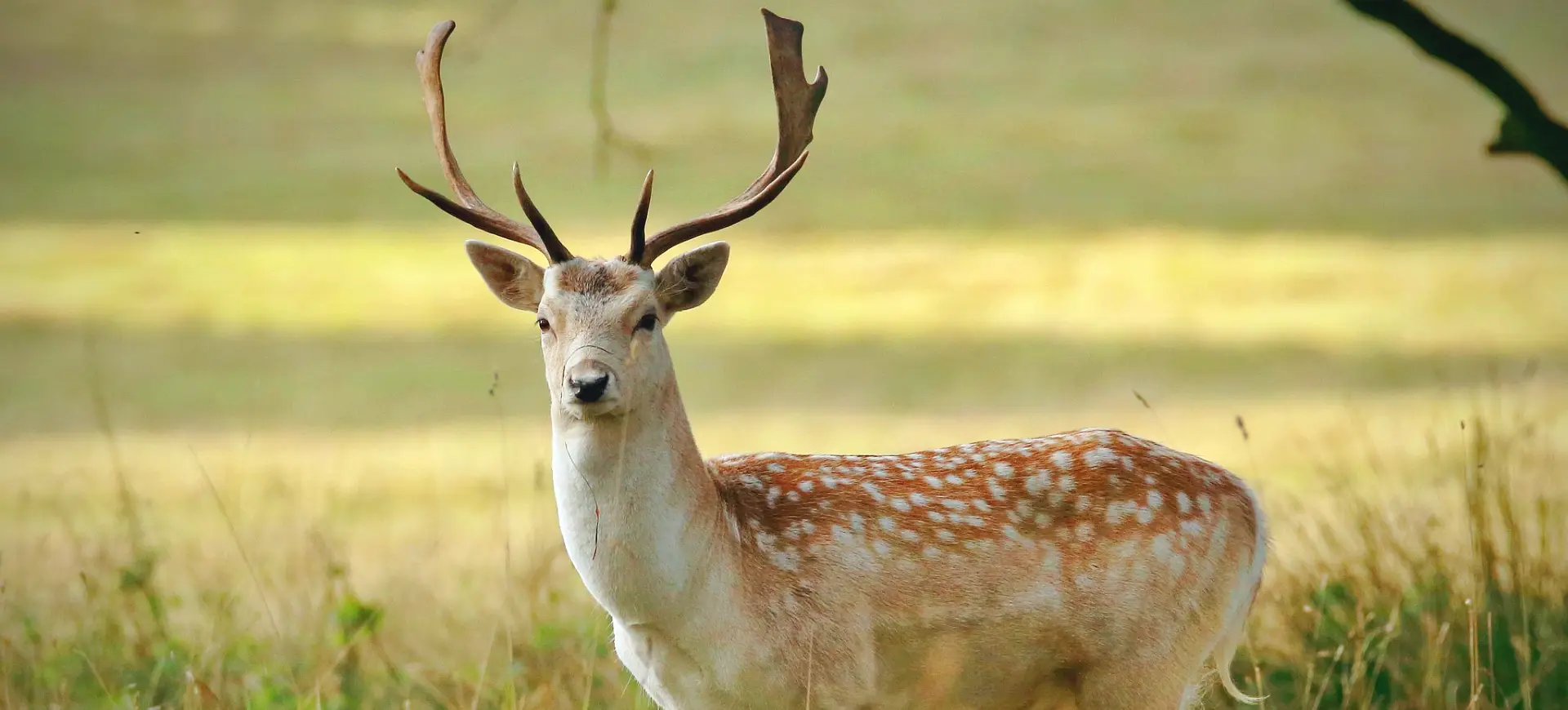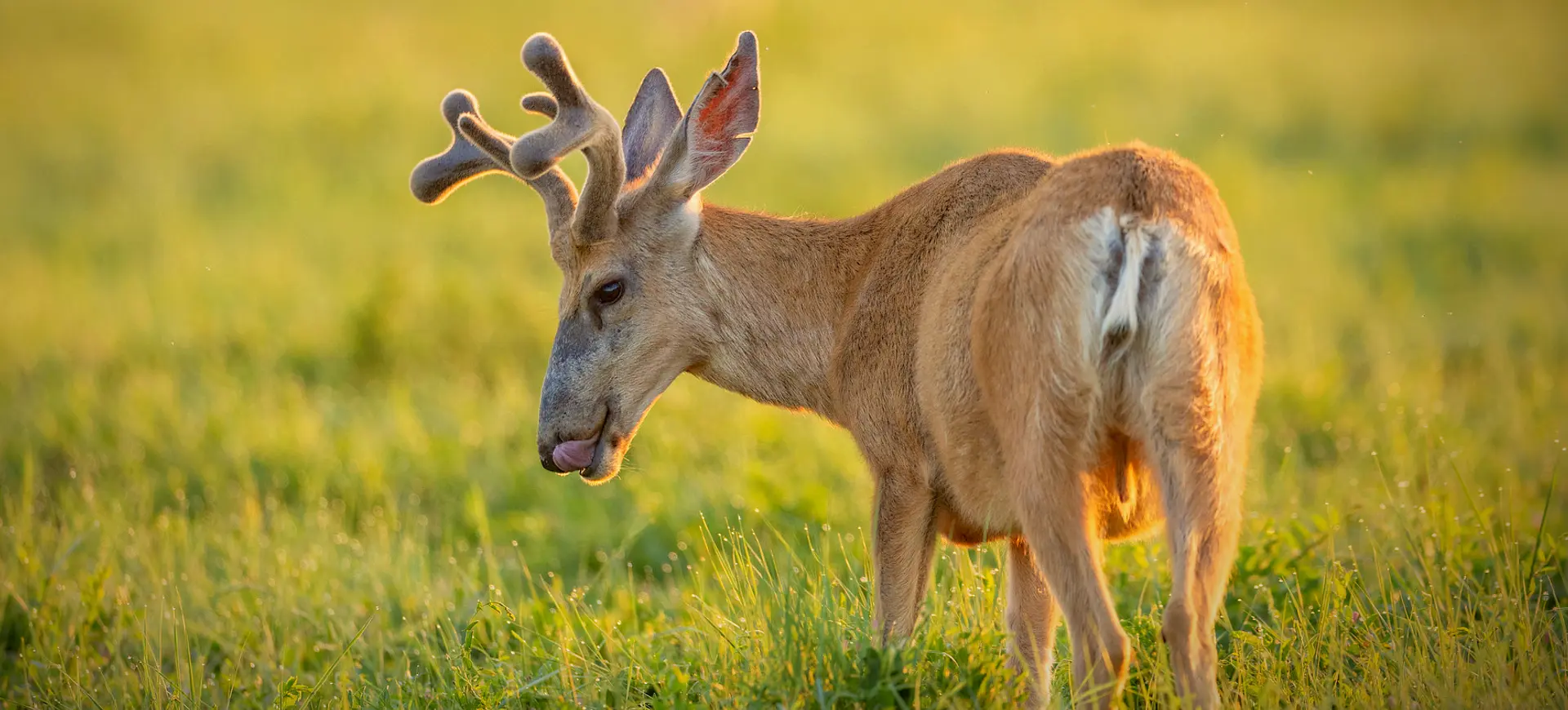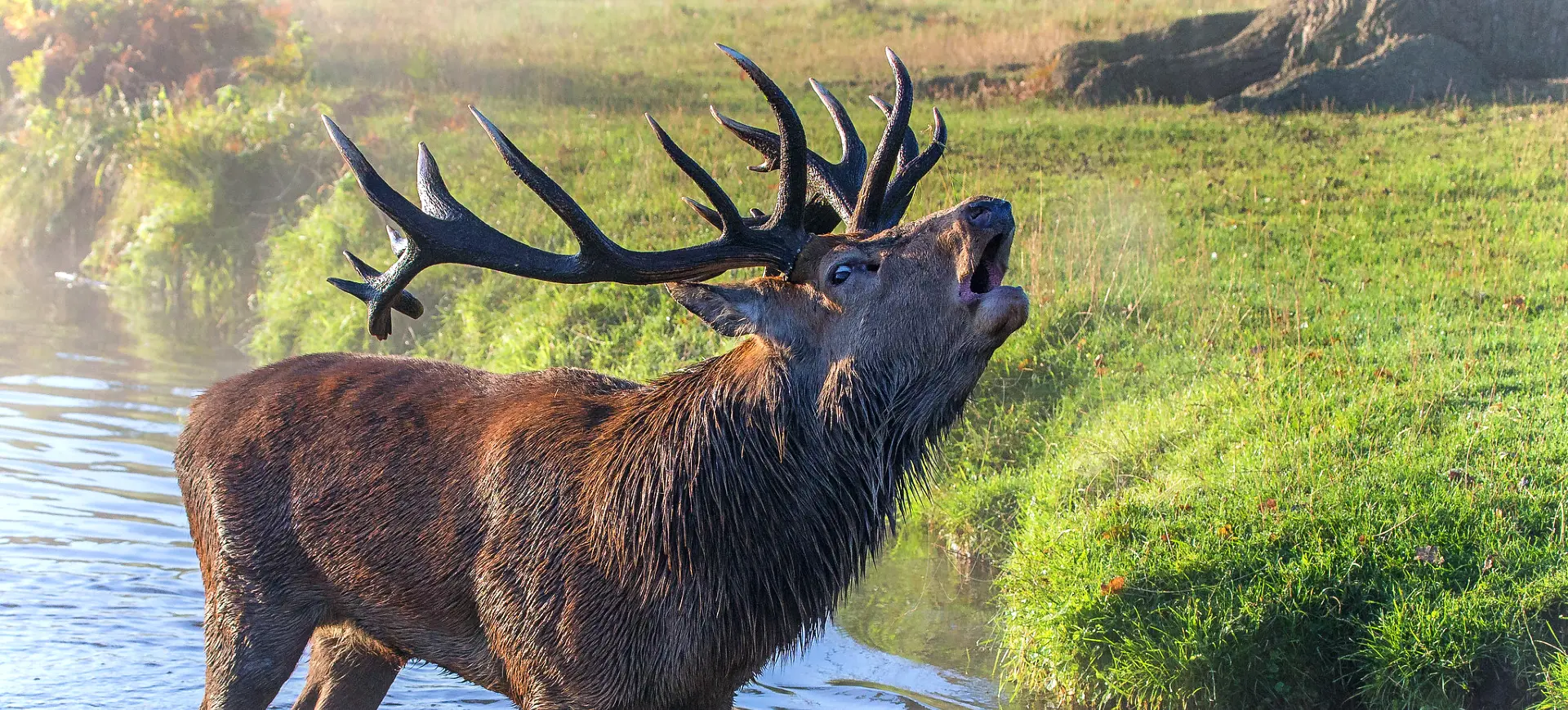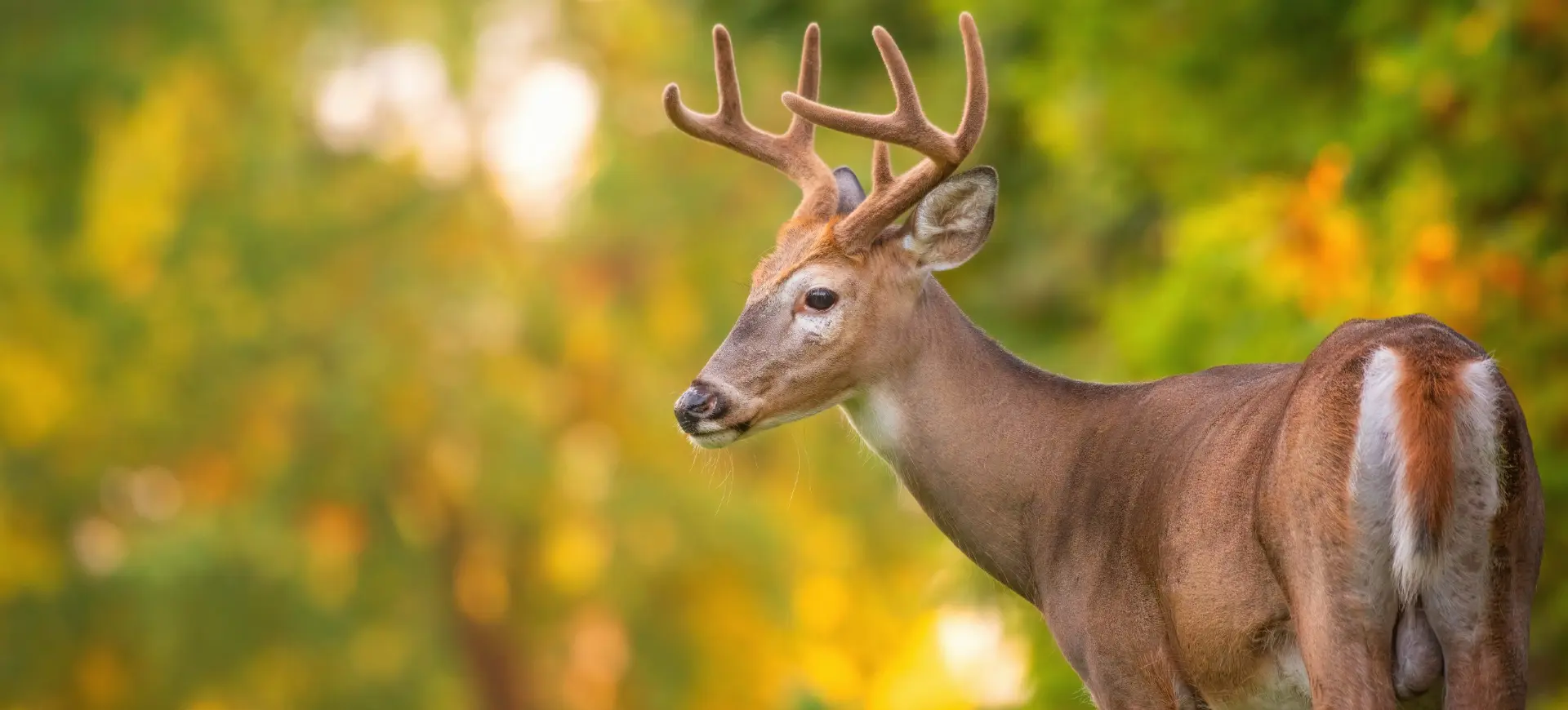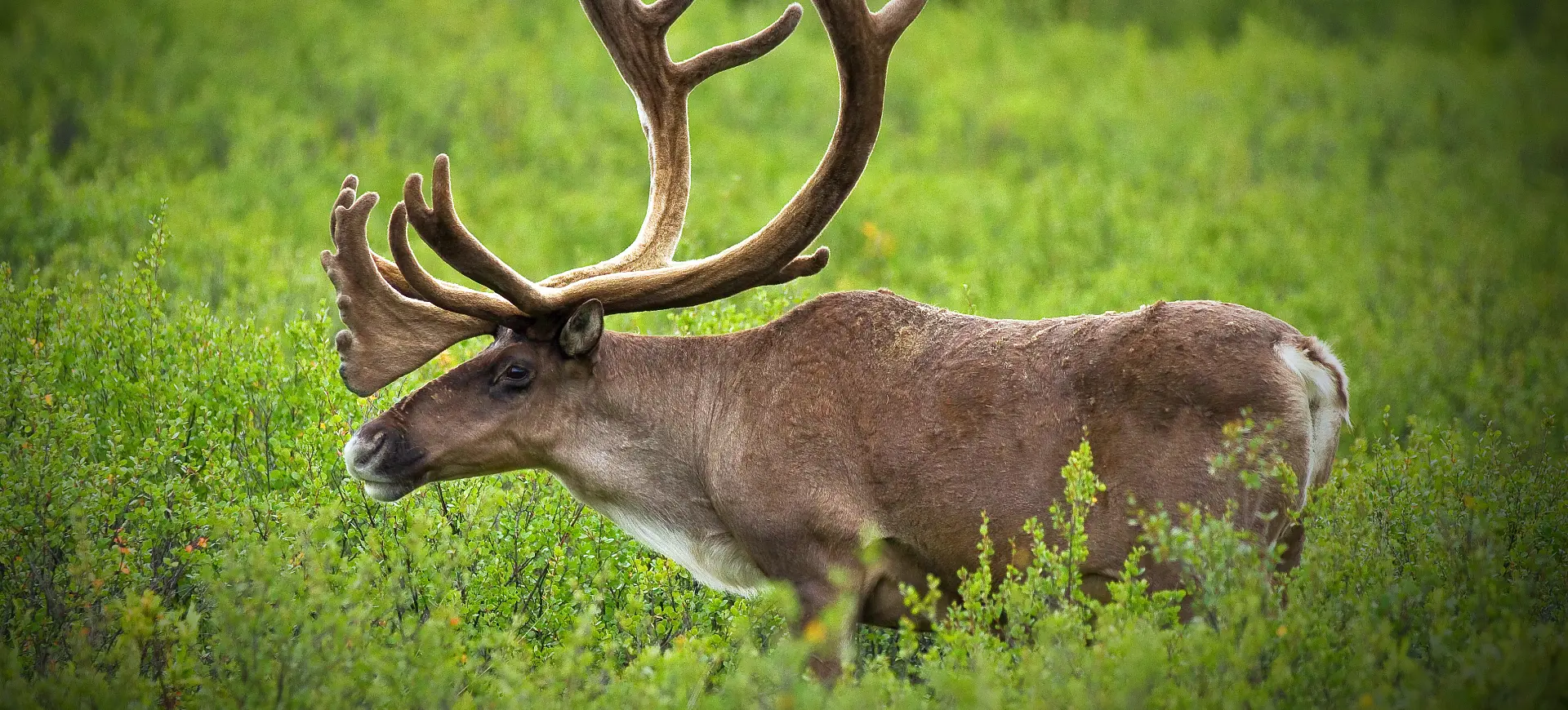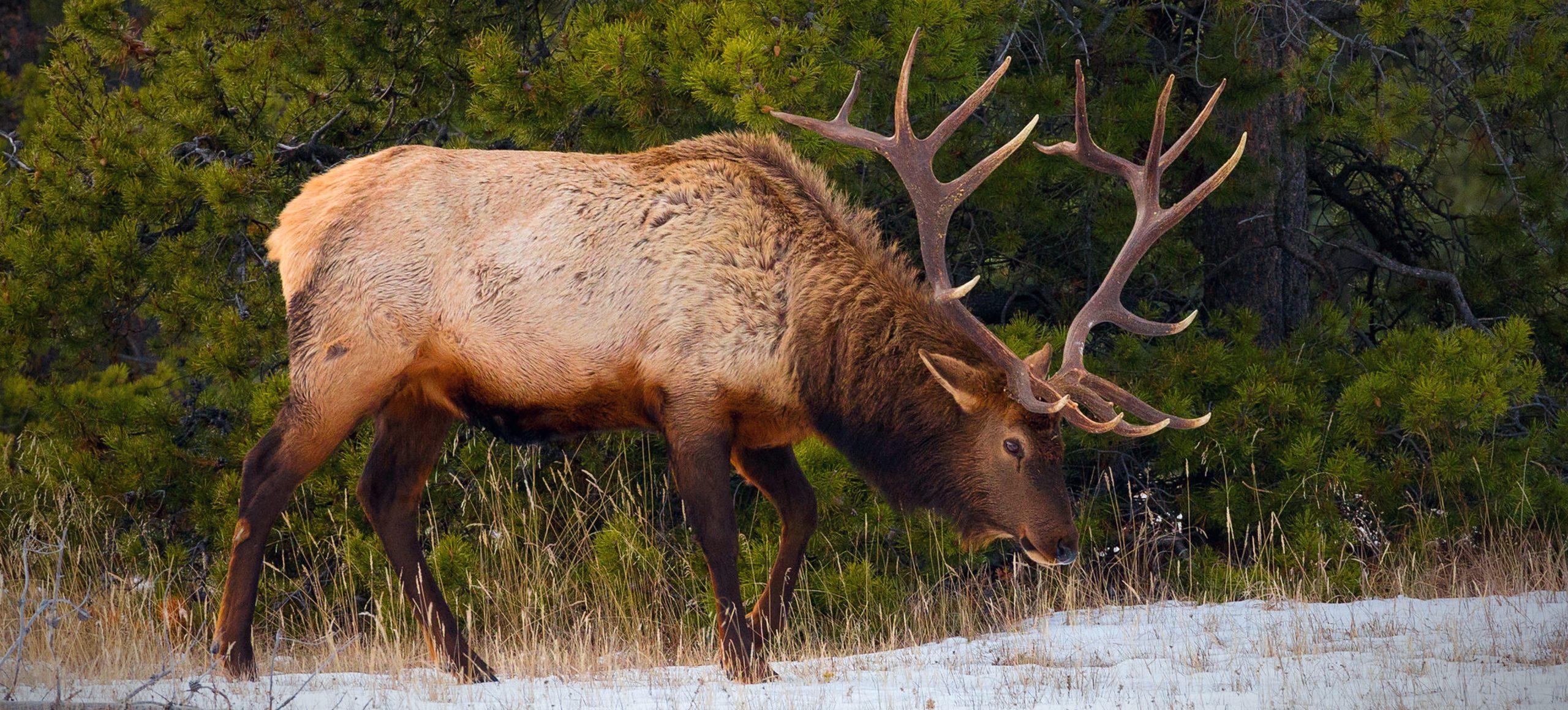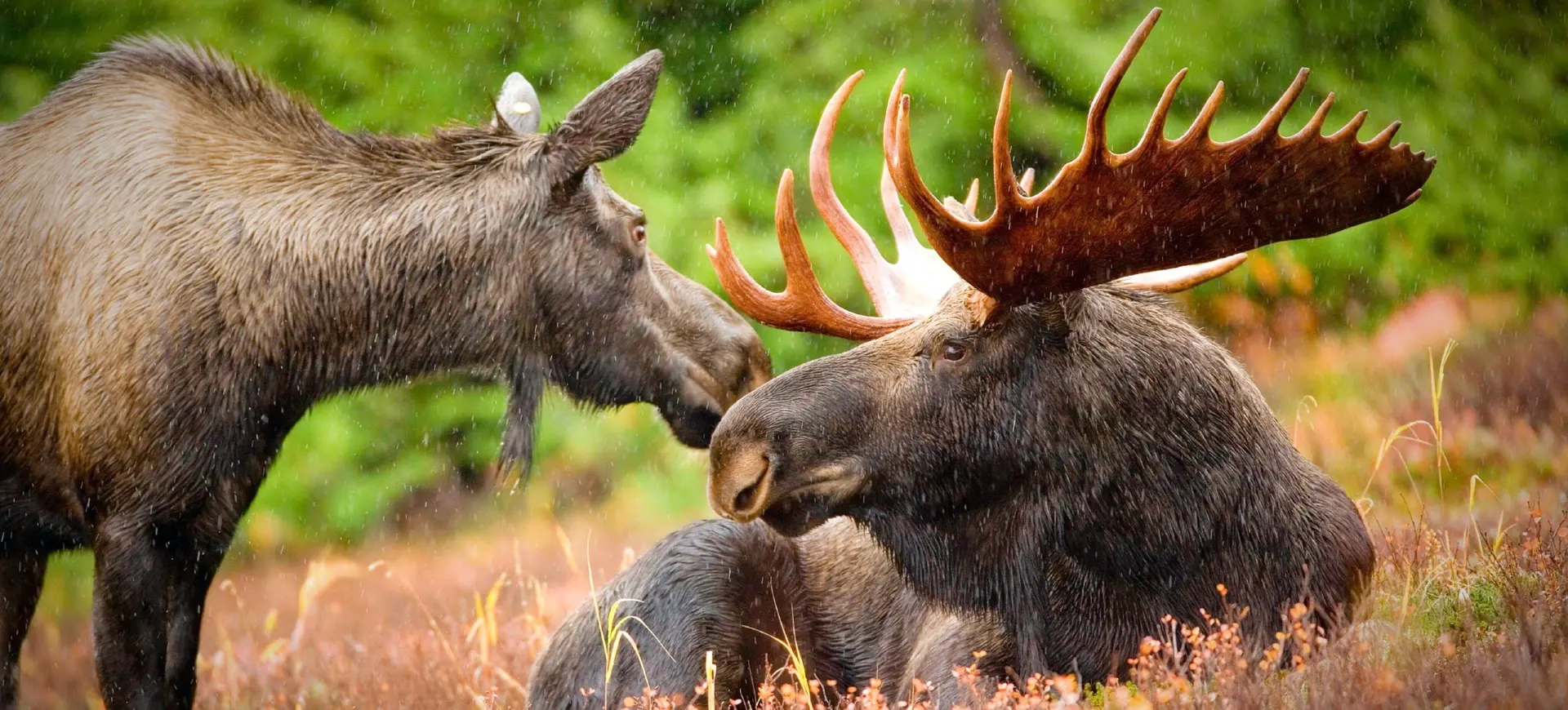Overview
The Roosevelt Elk, officially known as Cervus canadensis roosevelti, is the largest subspecies among the four North American elk subspecies. This impressive mammal was named in honor of the 26th President of the United States, Theodore Roosevelt, a fervent conservationist. Characterized by its substantial size and magnificent antlers, the Roosevelt Elk is a hallmark species of the Pacific Northwest, particularly in regions with temperate rainforests.
The most striking feature of this elk subspecies is its antlers, which are aesthetically grand and serve various functions, including self-defense and during mating displays. A mature male’s antlers can weigh up to 40 pounds and be as wide as four feet. The body size complements these impressive antlers, with males often weighing up to 1,100 pounds. These features make them one of the most easily recognizable mammals in their native range.
The Roosevelt Elk is primarily adapted to live in forested regions, benefiting from the cover and abundant food resources these habitats provide. However, their adaptability allows them to thrive in a variety of environments. They are frequently found in meadows and grasslands, especially during foraging. These open spaces offer a rich variety of grasses and sedges, essential components of their diet.
Taxonomy
Kingdom
Phylum
Class
Order
Family
Genus
Species
Sub Species
Type
Physical Description:
The Roosevelt Elk is known for its robust physique and dense fur, contributing to its majestic appearance. Males are typically larger than females and are easily distinguishable by their impressive antlers, which weigh as much as 40 pounds. The coat color of these elk ranges from copper brown to light brown, offering a natural camouflage that helps them blend into their forested habitats.
Distinct patches of lighter coloration sometimes mark their coats, adding another layer to their natural camouflage. These color variations help them blend into their surroundings and serve as a form of identification among individuals. The combination of size, antlers, and coat color make the Roosevelt Elk a physically imposing and visually captivating species, well-adapted to its native environment.

Lifespan: Wild: ~10 Years || Captivity: ~20 Years

Weight: Male: 700-1100 lbs (317–499 kg) || Female: 575-625 lbs (260–283 kg)

Length: Male: 8-10 feet (244-305 cm) || Female: 6.5-8 feet (198-244 cm)

Height: Male: 50-60 inches (127-152 cm) || Female: 45-55 inches (114-140 cm)

Top Speed: 45 mph (72 km/h)
Characteristic:
Native Habitat:
The Roosevelt Elk strongly prefer damp forests and grassy meadows, environments where they can find abundant food and cover. These habitats are most commonly found in the lush, temperate rainforests of the Pacific Northwest. The dense forests offer them protection and concealment, while the meadows provide open spaces for foraging and social activities.
Their affinity for areas that combine forest and meadow is evident in their habitat choice. Such regions offer them the best of both worlds: open spaces for feeding on various plants and forested areas that provide cover from predators like wolves and bears. This blend of habitat features plays a crucial role in their survival and overall well-being.
Climate Zones:
Biogeographical Realms:
Continents:
Countries:
Diet:
Diet & Feeding Habits:
Roosevelt Elk have a diverse diet consisting primarily of grasses, sedges, and forbs. Their grazing habits are dictated by the availability of these plants, which form the bulk of their diet. During spring and summer lush growth, they actively forage on these softer, more nutritious plant materials.
In contrast, during the winter months, their diet shifts due to the reduced availability of their preferred foods. They eat woody plants, including the bark and branches of trees such as willow, alder, and spruce. This seasonal variation in diet allows them to adapt to the changing conditions of their environment and helps sustain them year-round.
Mating Behavior:
Mating Description:
The mating season for Roosevelt Elk, commonly called the rut, usually occurs from late summer to early fall. During this period, male elks emit bugle vocalizations to attract females and establish dominance within the herd. The bugle serves multiple functions, including calling attention to themselves and warning rival males of their territorial claims.
Male Roosevelt Elk can become notably aggressive during the rut, often engaging in violent confrontations with competitors. These fights involve clashing their large, heavy antlers in dramatic displays of strength and skill. The outcomes of these battles helped to establish a hierarchy among males, with the victors gaining mating access to the available females.
Reproduction Season:
Birth Type:
Pregnancy Duration:
Female Name:
Male Name:
Baby Name:
Social Structure Description:
The social structure of the Roosevelt Elk varies seasonally, reflecting the different needs and behaviors throughout the year. Most of the year, females and their young often form loose herds that roam together for safety and foraging efficiency. In contrast, males are generally more solitary or may form smaller, less cohesive groups. These arrangements facilitate both social interaction and survival tactics such as predator avoidance.
During the mating season, this social dynamic undergoes a significant shift. Dominant males gather harems of females, which they defend aggressively against rival males. This seasonal aggregation is critical to their reproductive strategy, as the males vie to mate with multiple females. The formation of harems by dominant males was a focal point of social interaction and competition during this period.
Groups:
Conservation Status:
Population Trend:
The population of Roosevelt Elk has been relatively stable in recent years, largely due to concerted conservation efforts. These include establishing and maintaining protected areas specifically designed to preserve their natural habitats. These conservation zones safeguard against the most immediate threats to their population, such as habitat destruction and illegal hunting.
Existing in these protected areas has given the Roosevelt Elk a buffer against many challenges wildlife faces, including encroachment by human activities. Such protective measures have been instrumental in minimizing risks like habitat fragmentation and resource depletion. Overall, these conservation initiatives have played a vital role in maintaining a stable population of this majestic species.
Population Threats:
Habitat loss remains one of the most significant threats to the Roosevelt Elk population, particularly due to logging and agricultural development. As forests are cleared for these activities, the natural environments that these elks rely on for food and shelter are dwindling. This habitat degradation directly impacts their ability to forage, find cover, and, ultimately, survive.
Another emerging threat is the potential for disease transmission from domestic cattle. Common diseases in domesticated animals can be highly infectious and detrimental to wildlife populations. When Roosevelt Elk comes into close contact with domestic cattle, the risk of spreading illnesses such as brucellosis or bovine tuberculosis increases, posing new challenges for their conservation.
Conservation Efforts:
Conservation efforts for the Roosevelt Elk primarily focus on habitat preservation, ensuring these large mammals have access to the forests and meadows crucial for survival. Establishing wildlife corridors is another key strategy, allowing elks to move between fragmented habitats safely. These corridors mitigate some of the negative effects of habitat loss and fragmentation, promoting genetic diversity and reducing inbreeding.
Management programs also include controlled hunting to maintain a balanced ecosystem. By setting quotas and seasons for elk hunting, wildlife agencies aim to control the population size sustainably. These controlled hunting programs are often based on extensive scientific research and monitoring, ensuring they contribute positively to Roosevelt Elk populations’ overall health and stability.
Additional Resources:
Fun Facts
- Males are called bulls, while females are called cows.
- The species is known for its impressive antlers, weighing up to 40 pounds.
- They can consume up to 20 pounds of vegetation in a single day.
- Roosevelt Elk has a keen sense of smell, which is 20 times greater than a human’s.
- They are excellent swimmers and often cross bodies of water for food.
- During the rut, male elk can be heard bugling, a unique sound that can carry for miles.
- They are one of the largest species of deer in the world.
- Roosevelt Elk are highly adaptable and can live in various habitats.
- Their eyesight is not as keen as their sense of smell, but they are very sensitive to movement.
- Elk were once found across much of North America but are now primarily restricted to the western part of the continent.







